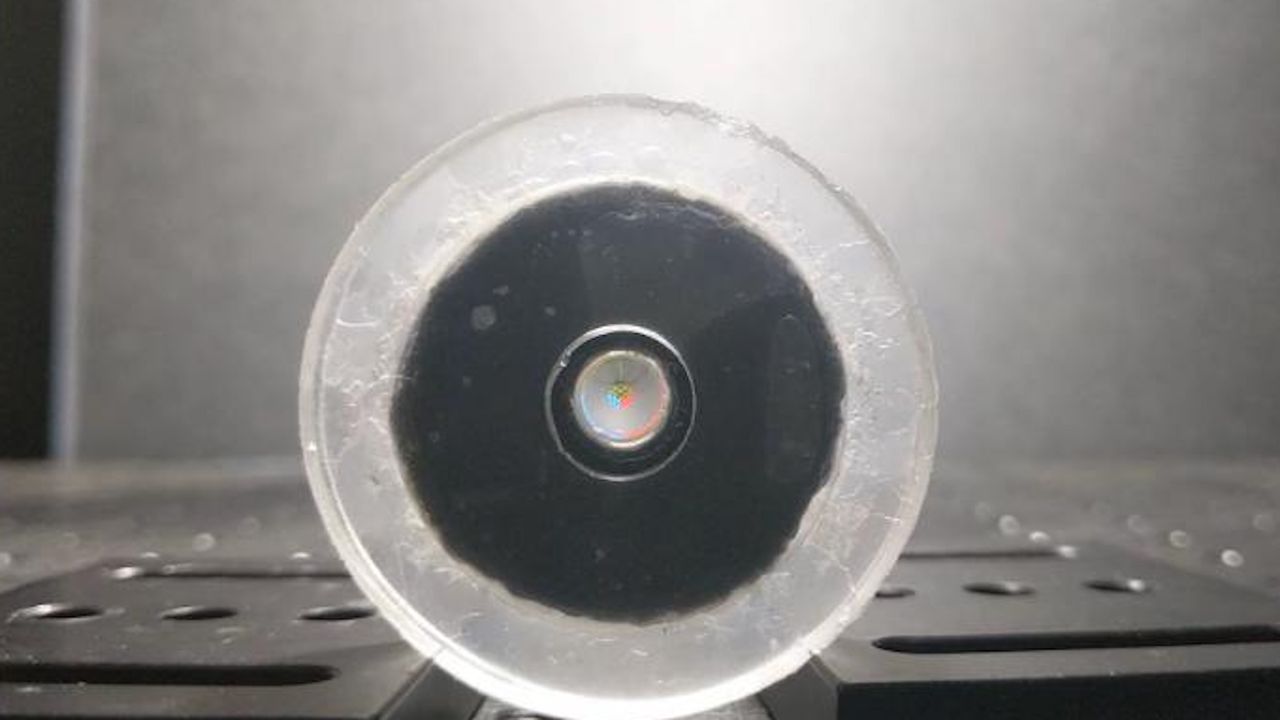
A squishy robotic “eye” can focus automatically in response to light, without any external power. The ultrapowerful robotic lens is sensitive enough to distinguish hairs on an ant’s leg or the lobes of a pollen grain.
The lens could usher in “soft” robots with powerful vision that would not need electronics or batteries to operate. Soft robotics can be used in a wide range of different applications, from wearable technology that can integrate with the human body to autonomous devices that can operate in uneven terrain or hazardous spaces, said study first author Corey Zheng, a doctoral student in biomedical engineering at the Georgia Institute of Technology. Traditional, electrically powered robots use rigid sensors and electronics to see the world.
The lens is made of a hydrogel, which contains a framework of polymers that can trap and release water, allowing the hydrogel to move between more liquid-like and more solid-like states. In this case, the hydrogel responds to heat by releasing water and shrinking when it’s warmed up, and absorbing water and swelling when it’s cooled.
The researchers fabricated a ring of hydrogel around a silicon polymer lens, situating the eye-like design in a larger frame. The mechanical structure is similar to the configuration of the human eye, Zheng said.
The hydrogel is embedded with tiny particles of graphene oxide, which are dark-colored and absorb light. When light of intensity equivalent to sunlight hits the graphene oxide, the particles heat up and warm the hydrogel, which shrinks and stretches, pulling the lens to focus it. When the light source is removed, the hydrogel swells and releases the tension on the lens. The hydrogel reacts to light across the visible spectrum.
In a new paper published today (Oct. 22) in the journal Science Robotics, Zheng and his doctoral adviser Shu Jia, a biomedical engineer at Georgia Tech, found that this lens could be used instead of the glass lens in a traditional light microscope to distinguish tiny details. For instance, the lens could image the 4-micrometer gap between a tick’s claws, see 5-micrometer filaments of fungus, and detect the 9-micrometer stubble on an ant’s leg.
More exciting, Zheng said, is that the researchers are now integrating the lens into a microfluidic system of valves made from the same responsive hydrogel. That means the light used to make the image can also serve to power an intelligent, autonomous camera system, Zheng said.
And because the hydrogel is adaptable, the lens may be able to “see” well beyond what the human eye can detect. For instance, it might be able to mimic the ability of a cat’s vertical eye to detect camouflaged objects, or to copy a cuttlefish’s odd W-shaped retina, which enables it to see colors humans can’t.
“We can actually control the lens in really unique ways,” Zheng said.
Published Date : 2025-10-22 21:49:00
Source : www.livescience.com

